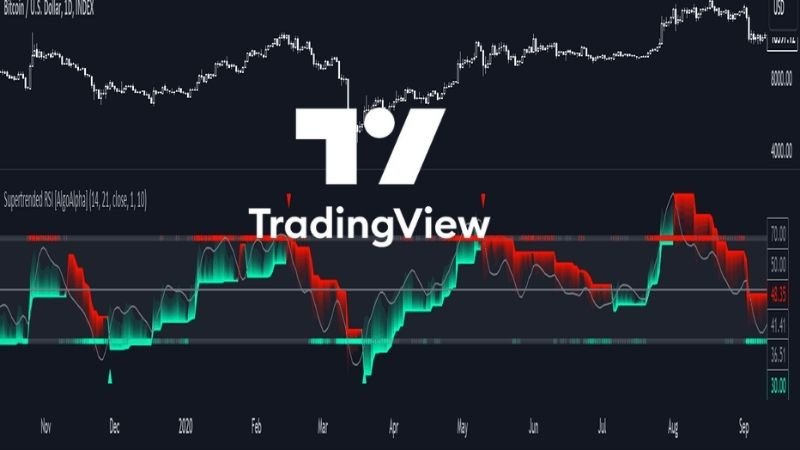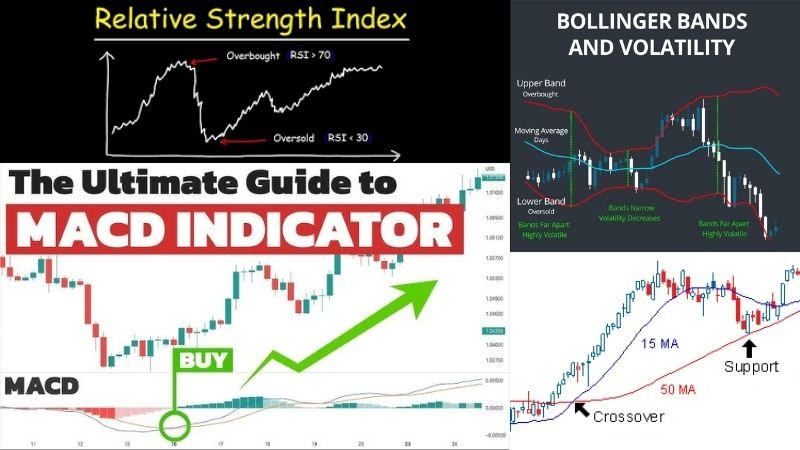Table of contents
Introduction
The world of cryptocurrency trading is a dynamic and ever-evolving landscape. What once was a niche interest has now exploded into a global phenomenon, attracting everyone from seasoned investors to curious beginners. The allure of high returns and the promise of financial freedom draws many into this realm, yet it’s crucial to approach crypto trading with knowledge and a strategic mindset. This comprehensive guide will serve as your compass, navigating you through the complexities of crypto markets, from understanding the basics to mastering advanced techniques. We’ll delve into various facets of how to trade cryptocurrency, explore the best platforms, and unravel some effective trading strategies. Whether you’re just starting or looking to refine your approach, this guide offers in-depth insights to empower your trading journey.
Cryptocurrency trading involves buying and selling digital currencies like Bitcoin and Ethereum on an exchange. The goal is to profit from price fluctuations. Here are the basic steps:
- Choose a reputable exchange.
- Create and verify your account.
- Deposit funds.
- Analyze the market and choose a cryptocurrency to trade.
- Place your order.
- Monitor your trades and manage risk.
Understanding the Basics
Before diving into the specifics, let’s lay a strong foundation. Cryptocurrency trading involves the buying and selling of digital assets like Bitcoin, Ethereum, and countless altcoins, with the goal of profiting from price fluctuations. Unlike traditional markets, the crypto market operates 24/7, creating endless opportunities but also demanding constant vigilance.
How to Trade Cryptocurrency: A Step-by-Step Approach
1. Setting Up Your Trading Account
The first step in your crypto trading journey is choosing a reliable exchange. The best cryptocurrency trading platforms offer a combination of security, ease of use, a variety of trading pairs, and competitive fees. Platforms like Coinbase, Binance, Kraken, and KuCoin are frequently cited as top contenders, each offering a unique suite of features. You should consider factors such as the exchange’s regulatory compliance, security features, and the geographical location of the exchange when making your decision.

2. Understanding Your Trading Options
Once you’ve set up an account, you’ll need to learn how to buy and sell cryptocurrency. This typically involves using a fiat currency (like USD or EUR) to purchase crypto, or trading one cryptocurrency for another. The exchange will offer different ways to place your order, such as market, limit or stop orders.
3. The Power of Knowledge
Before putting your capital at risk, invest time into learning how to read cryptocurrency charts. Understanding chart patterns, indicators, and volume can provide valuable clues about future price movements. This brings us to the vital aspects of technical analysis for cryptocurrency. Let’s explore the nuances of technical analysis further.
Diving Deep: Trading Strategies & Techniques
Technical Analysis Unveiled
Technical analysis for cryptocurrency involves studying historical price data and trading volumes to predict future market movements. This methodology includes various tools and patterns.
Common Technical Indicators
- Moving Averages (MA): Used to identify the trend direction.
- Relative Strength Index (RSI): Indicates overbought or oversold conditions.
- Moving Average Convergence Divergence (MACD): Helps spot trend changes.
- Bollinger Bands: Measure volatility and identify potential breakout points.
Recognizing Chart Patterns
Chart patterns such as triangles, flags, wedges, and head and shoulders can indicate potential breakouts, reversals, and continuations. Learning to recognize these patterns is paramount to successful trading.
Choosing Your Path: Trading Styles
The question is not only “how to trade cryptocurrency” but also “how will you trade it?”. Your approach should align with your risk tolerance, time commitment and financial goals.
Cryptocurrency Day Trading
Cryptocurrency day trading involves making numerous trades throughout the day to profit from short-term price fluctuations. This style requires intense focus, quick decision-making skills, and a deep understanding of market dynamics. Day traders often use technical indicators to identify entry and exit points. However, it’s a risky style of trading and not suitable for everyone.
Long-Term Cryptocurrency Trading
In contrast, long-term cryptocurrency trading, often referred to as “hodling”, involves buying and holding assets for an extended period. This approach is based on the belief that the underlying technology and adoption will increase over time, thus driving prices upwards. Long-term investors typically focus on fundamental analysis, evaluating factors like network growth, team expertise, partnerships, and tokenomics.
Understanding Altcoin Trading
What is altcoin trading? Altcoins are any cryptocurrency that is not Bitcoin. Trading altcoins can offer higher return potential due to their greater volatility, but they also come with increased risks. Successful altcoin traders research the projects and understand the technologies they are investing in.
Mastering Risk Management
Effective risk management is paramount to success in cryptocurrency trading. The crypto market is known for its extreme volatility, so taking appropriate risk measures is crucial.
The Art of Stop-Loss Orders
One of the most important risk management tools is understanding how to use stop loss in cryptocurrency trading. A stop-loss order automatically closes your position once the price reaches a predetermined level, limiting your potential losses. Stop losses can be fixed price or trailing stop losses that move with the price, locking in some profits while protecting you from huge sudden price moves.
Understanding Margin Trading
What is margin trading in cryptocurrency? Margin trading lets you borrow funds from a broker to increase your position size. While margin trading amplifies potential profits, it also magnifies losses. Using margin responsibly is vital to not wipe out your account.
Diversifying Your Portfolio
Diversification is another essential risk management strategy. Instead of putting all your capital into one asset, spread it across different cryptocurrencies to mitigate risk.
Navigating the Challenges
Risk management in cryptocurrency trading is not just about tools; it’s also about emotional control. Fear and greed can lead to rash decisions. Therefore, develop a trading plan and stick to it, avoiding impulsive actions driven by emotions.
Cryptocurrency Market Trends
Understanding cryptocurrency market trends is essential for traders. Keep up with the news, regulatory developments, technological advancements, and macroeconomic factors that could impact the price of digital assets. Staying informed allows you to adapt your strategies.
Understanding Crypto Volatility
What is crypto volatility? Volatility refers to the degree of price fluctuations of an asset. Crypto assets are known for high volatility, which can lead to large profits and losses in a short amount of time. Understanding the causes and effects of volatility is crucial for risk management.
Best Cryptocurrencies for Trading
The best cryptocurrencies for trading vary depending on market conditions and trading preferences. Bitcoin and Ethereum are often the most liquid and frequently traded but other altcoins such as Solana, Cardano or Avalanche are also very popular amongst traders.
Crypto Trading Tools and Resources
Trading Platforms and Exchanges
As previously discussed, choosing the right platform is vital. Consider factors like security, supported assets, fees, and user experience.
Chart Analysis Tools
Platforms like TradingView and CoinGecko offer advanced charting tools, technical indicators, and other analytics to support your trading journey.

News and Market Analysis
Stay updated with reliable news sources, market analysis, and insights from experienced traders to inform your decisions.
Community Engagement
Engaging with the trading community via social media, forums, and discussion groups can provide valuable insights and perspectives.
Crypto Trading for Beginners: Starting Right
If you’re new to cryptocurrency trading, start small and focus on learning. Begin with paper trading, practice strategies without risking real capital, and always prioritize education.
Trading Tips for Beginners
- Start with a Plan: Define your goals and risk tolerance before making trades.
- Educate Yourself: Continuously learn about market dynamics, trading tools and strategies.
- Don’t Over-Leverage: Avoid using high levels of margin, especially when you’re just starting.
- Manage Your Emotions: Stay calm and avoid impulsive reactions.
- Practice Regularly: Use demo accounts and paper trading to hone your skills.
How to Trade Bitcoin: Specific Strategies
How to trade Bitcoin? Bitcoin, as the most popular cryptocurrency, can be traded using all the techniques discussed, day trading, swing trading, long-term holding. It is usually less volatile than altcoins. Bitcoin has long been a great indicator of the market and it moves alongside global market trends.
Conclusion: Your Journey Ahead
Cryptocurrency trading offers immense opportunities for those willing to invest time and effort into understanding the intricacies of this market. This guide covers vital aspects from setting up your accounts and choosing the right platform to understanding technical analysis and managing risks. By diligently using these crypto trading tips and strategies you will be in a much better position to navigate the market effectively. As you continue on this path, remember to learn from your successes and your mistakes. The world of cryptocurrency is constantly evolving, so staying agile, adaptable and informed will be the key to long-term success.
Frequently Asked Questions (FAQs)
What is cryptocurrency trading?
Cryptocurrency trading involves buying and selling digital currencies, such as Bitcoin, to profit from market fluctuations. It’s a 24/7 market requiring careful analysis, risk management, and a solid understanding of underlying price drivers and potential influencing factors involved. It’s high speculation high reward market.
How do I choose a cryptocurrency trading platform?
Consider reputable exchanges like Binance or Coinbase. Prioritize security features, fee structures, user interface, available cryptocurrencies, and supported payment methods, also considering your local regulations before making any big commitments. Always check user reviews and do independent research.
What are common cryptocurrency trading strategies?
What is the best way to manage risk in cryptocurrency trading?
Manage risks by implementing stop-loss orders, diversifying your portfolio, avoiding excessive leverage, and adhering to a well-defined trading plan. Control your emotions and stay informed. Never invest more than you are able to lose as losses are extremely possible.








Pingback: What is Kraken Crypto: A Comprehensive Guide CoinFxPro Crypto Tools
Pingback: What is Ripple Cryptocurrency? Discover XRP’s Role in Finance
Pingback: How Bubblemaps Crypto Tools Revolutionize Blockchain Analytics
Pingback: ZuluTrade Review: Is It the Right Copy Trading Platform for You? - CoinFxPro
Pingback: ChartPrime Review: Is It the Ultimate Trading Tool? CoinFxPro
Pingback: Unlocking the Potential: A Deep Dive into Node Sales - CoinFxPro
Pingback: Koinly Reviews: The Complete Crypto Tax and Portfolio Guide CoinFxPro
Pingback: The Definitive Guide: How to Buy Cryptocurrency in 2025 - CoinFxPro
Pingback: What Causes Crypto to Go Up and Down? A beginner's guide
Pingback: Crypto’s Sneaky Trap: How to Identify the Bait and Switch Scam - CoinFxPro
Pingback: What Does Crypto Mining Mean and How Does it Work?